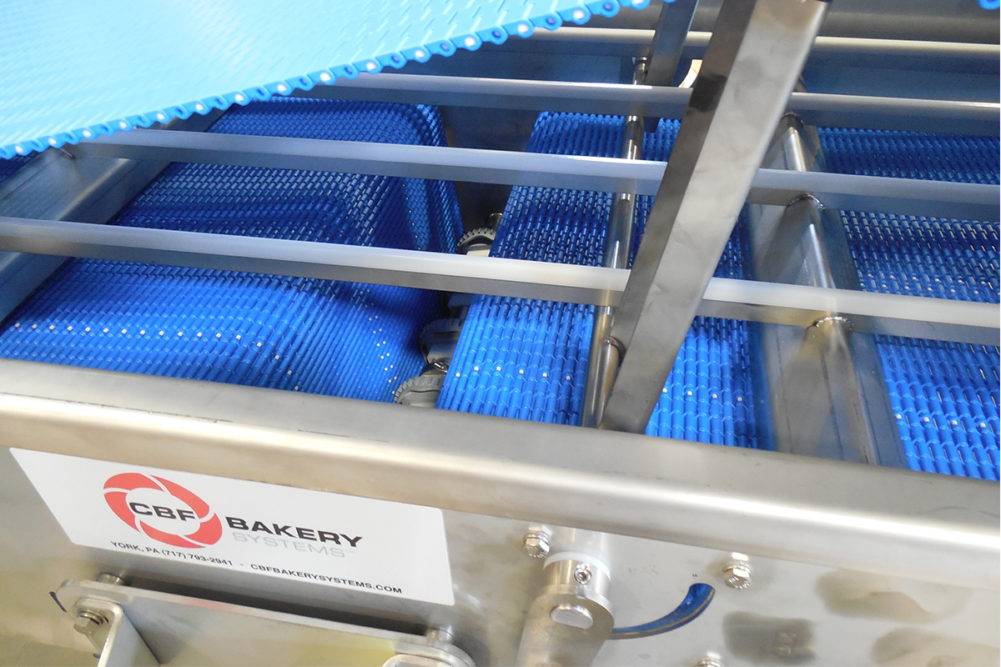Every bakery needs a regular checkup to search for those early warning signs that often go unnoticed or are ignored at first. That’s especially true with belts and conveyors, which are the arteries that keep products flowing throughout the operation.
“Belt tension is sort of like blood pressure,” noted Jonathan Lasecki, director of engineering, Ashworth Bros. “You check your blood pressure, but that’s not the cause of the illness. If belt tension changes, what’s causing that to change? That’s when you look further into the system.”
Many companies like Ashworth make regular house calls, so to speak, to check a production line, establish a baseline and then monitor how it varies over time.
“Is it changing for better or worse?” Mr. Lasecki asked. “If it’s changing to the worse, what is causing that change?”
In addition to gauging tension, a regular checkup can see if the belt is running straight or pinpoint a possible obstruction. Sometimes a bakery’s yield or performance doesn’t seem up to par.
“The first step is to create a scheduled visual examination of the conveyor during operation,” said Bob Harrington, vice president of sales and marketing, Capway Automation. “The second step is to schedule a more in-depth physical examination of the conveyor during downtime to determine if wear is present. While performing this task, any necessary lubrication of bearings, drives or belting needs to be done.”
To diagnose an operation, observe workers’ behavior, too, and how they’re interacting with the equipment, especially if they’re giving an automated line a little help it shouldn’t need.
“If I walk through a bakery and see an operator touching every pan as it goes by, there’s obviously a problem,” said Brent Grantham, national account manager, Baker Thermal Solutions, a Middleby Bakery company. “It’s important that photo eyes are set and working correctly, along with conveyor speeds and timing.”
And yes, often the equipment will self-prescribe a treatment if the maintenance staff pays close attention.
“The first thing I like to do when I come up to a conveyor that is having issues is to listen to it,” said Mike Lavalle, corporate account manager, Intralox. “Most conveyor-related issues start off small and get worse over time. Chattering, snapping, excessive noise and vibration are usually good indicators something is wrong. Next, I like to review the drive end to make sure the sprockets are engaging the belt properly and to ensure the proper amount of wrap-around is on the sprockets.”
Remember that a regular checkup is a must for equipment in a tough environment.
“In a bakery, the conveyor system works under demanding conditions with high heat, humidity, very low temperatures and the presence of dust,” explained Loïc Lamboley, customer success manager, North America, Mecatherm. “Poorly maintained, a conveyor can experience rapid belt wear and component failure, with unacceptable amounts of downtime that impact productivity and customer benefits.”
To avoid system crashes on a high-speed line, ensure that maintenance has been performed properly by cleaning the assemblies and tightening the set screws and other mechanical parts.
“A majority of frequent stops can be avoided with simple actions,” Mr. Lamboley said.
Clint Adams, vice president of sales and marketing, CBF Bakery Systems, urged bakers to search for belt fraying, the buildup of debris or a loose belt.
“Check if the conveyor belts are off track because they can quickly become damaged, which then causes damage to other parts,” he advised. “Gearbox noise or excessive heat from either the motor or the gearbox can be a sign something is not correct. These warnings can predict potential drive failures or help to identify other problems.”
In addition, look for stretched, chipped or torn belting, proper motor sizing, and bearings that can handle the load, noted David White, chief executive officer, Quantum Technical Services. With a problem, search for the root cause. Ask where the product is being lost and if transfers are too wide. These issues may indicate the need for possible design improvements.
Normally, he added, the bakery operation will develop its own maintenance schedule based on usage, and these schedules often include daily walk-arounds for visual inspections, quarterly evaluations and repairs by an OEM technician.
“Make sure spare parts are on hand, for example — belts, motors, bearings and rollers — to help minimize downtime,” Mr. White said.
Mr. Lavalle recommended building regular inspect-and-repair lists. For example, inspect belts for missing or damaged belt modules. Check sprockets for mis-tracking or movement on the shaft and conveyors for missing or damaged return rollers and wear strips. Look for belts with missing, damaged or protruding belt rods and keep a close eye on all incoming power sources, such as air hoses, fittings and connections.
Then replace, repair or beware.
This article is an excerpt from the June 2021 issue of Baking & Snack. To read the entire feature on Conveyors, click here.





